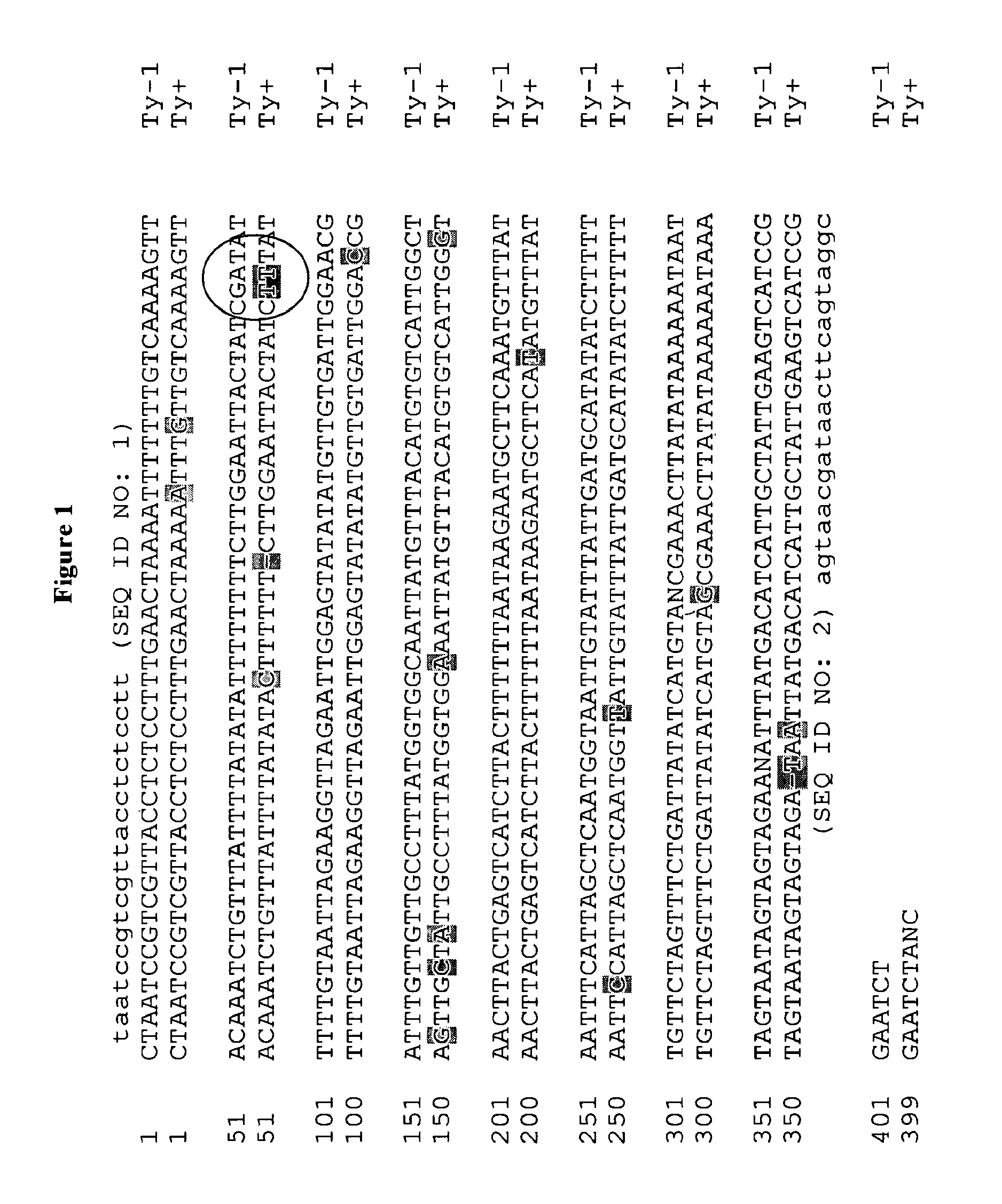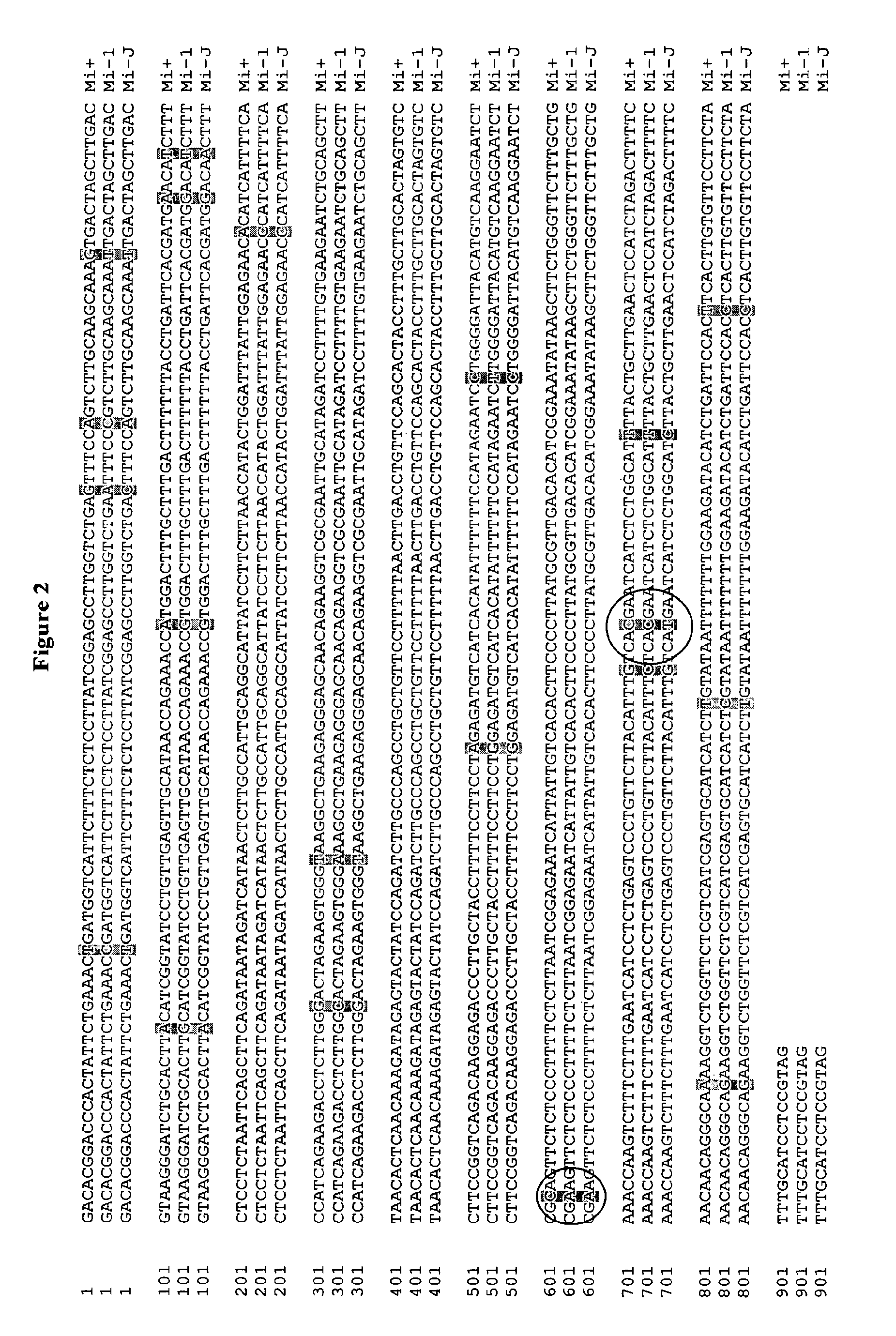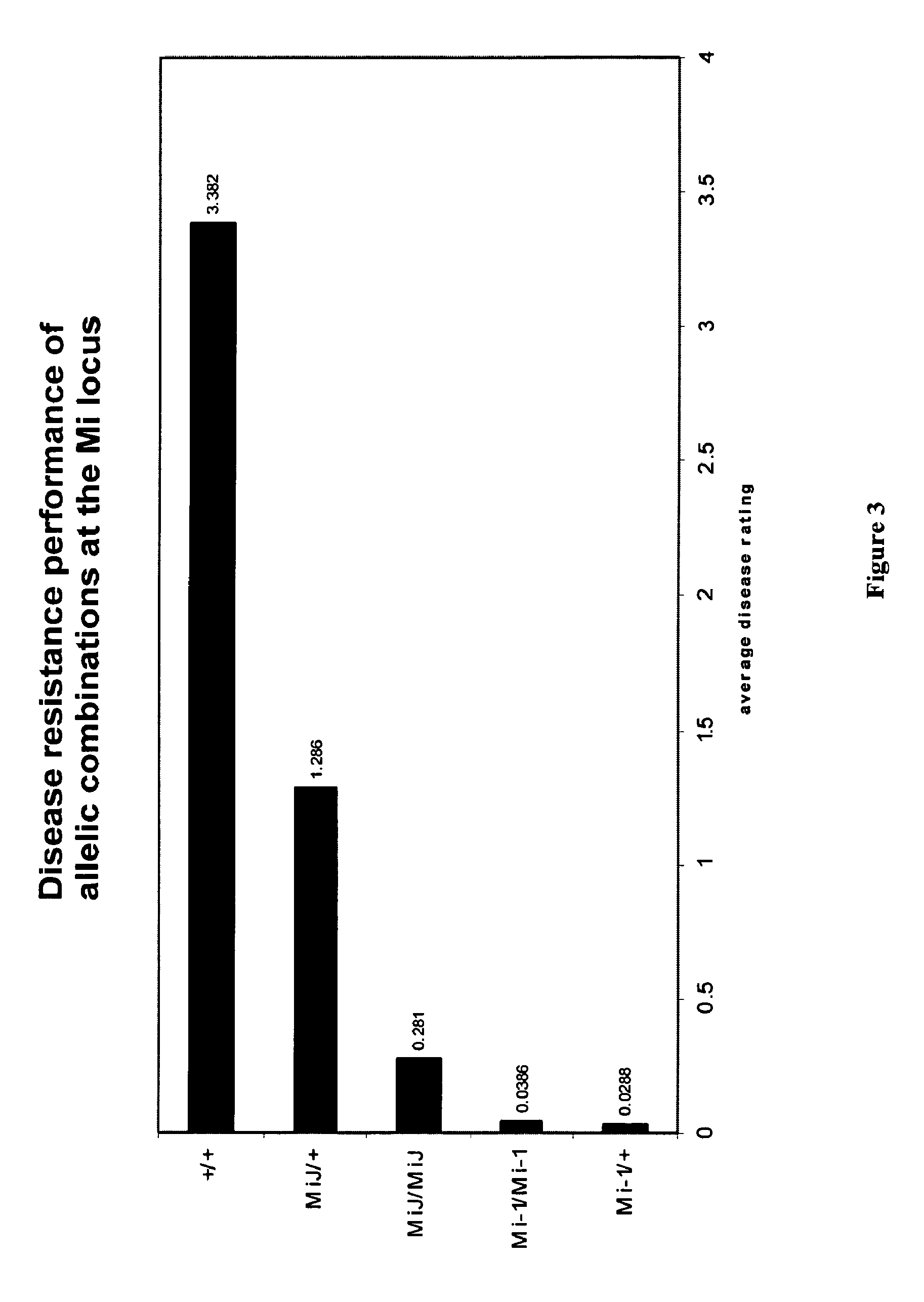Methods for coupling resistance alleles in tomato
a technology of alleles and coupling resistance, which is applied in the field of coupling resistance alleles in tomato, can solve the problems of no transgenic tomato varieties available to growers that are resistant to any pathogens, promising technology for commercial tomato cultivation, and production of lumps or galls of 1 mm to 10 mm on the roots, so as to reduce the effect of genetic drag and good horticultural characteristics
- Summary
- Abstract
- Description
- Claims
- Application Information
AI Technical Summary
Benefits of technology
Problems solved by technology
Method used
Image
Examples
example 1
Pathology Testing for Determining Resistance to Meloidogyne incognita
[0099]A live pathogen assay was used to assess resistance to the Meloidogyne incognita, an etiological agent of root knot nematode disease in tomatoes. The resistance rating is based on the extent and size of gall formation. Table 1 provides the rating scoring system for determining root knot nematode resistance. A scale of zero to four was used (Table 1) to score for disease symptoms of M. incognita.
TABLE 1RATINGSCORESEVERITY OF SYMPTOMS0NO GALLS PRESENT1ONE TO TWO SMALL GALLS (2SOME GALLS (3-7), SMALL IN SIZE (DISSEMINATED3SEVERAL GALLS (>7), BIGGER IN SIZE (>1 MM),DISSEMINATED4MANY GALLS, IN CHAINS, DEFORMEDROOTS
[0100]Meloidogyne incognita inoculum was prepared by infecting plants from a susceptible tomato line for two months; at this time, the roots of the infected plants show mature egg masses from the pathogen. Roots were harvested for inoculum preparation and cut into four to five centimeter pieces. The tes...
example 2
Protocol for Determining Resistance to Tomato Yellow Leaf Curl Virus (TYLCV)
[0111]This example describes a protocol for determining whether tomato plants are resistant, intermediate resistant or susceptible to TYLCV.
[0112]Plants are grown in a field with natural infection of TYLCV through Bemisia tabaci. Naturally occurring field infection is a preferred method of determining resistance in areas where the virus is endemic, as the movement of the viral pathogen can be controlled by various governmental agencies (quarantine disease). For example, the United States Department of Agriculture will not normally allow the introduction of the TYLCV pathogen into most tomato growing regions of the United States where the pathogen does not normally exist. Conducting disease screens under controlled conditions is cumbersome because of the need to raise the insects (Bemisia tabaci) for the transmission of the virus.
[0113]A scale of 0 to 4 was used (Table 3) to score for disease symptoms of TYLC...
example 3
Isolation of Tomato DNA for Marker Tests
[0118]By no way limiting, the following protocol can be used to extract tomato DNA for subsequent molecular marker testing. Those skilled in the art recognize that many DNA extraction protocols are available in the prior art. All chemicals described in the protocol can be obtained from Sigma Chemical Company, Saint Louis, Mo. The procedure involves the following steps:
[0119]1. Collect a plant part that is approximately the size of a well in the 96 well microtiter plate format. Preferably, either a seed sample is used, or a tissue sample is taken from young leaves.
[0120]2. Add 150 μl extraction buffer (200 mM Tris-HCl, pH 7.5; 250 mM NaCl; 25 mM EDTA; 0.5% SDS) to the sample and macerate the tissue.
[0121]3. Centrifuge the plate for 15 minutes at 1900-×g at 15° C.
[0122]4. Transfer 100 μl of the supernatant fraction to a new 96 well plate that contains 100 μl of 2.5M potassium acetate (pH 6.5) in each well. Mix by shaking for approximately 2 minu...
PUM
 Login to View More
Login to View More Abstract
Description
Claims
Application Information
 Login to View More
Login to View More - R&D
- Intellectual Property
- Life Sciences
- Materials
- Tech Scout
- Unparalleled Data Quality
- Higher Quality Content
- 60% Fewer Hallucinations
Browse by: Latest US Patents, China's latest patents, Technical Efficacy Thesaurus, Application Domain, Technology Topic, Popular Technical Reports.
© 2025 PatSnap. All rights reserved.Legal|Privacy policy|Modern Slavery Act Transparency Statement|Sitemap|About US| Contact US: help@patsnap.com



